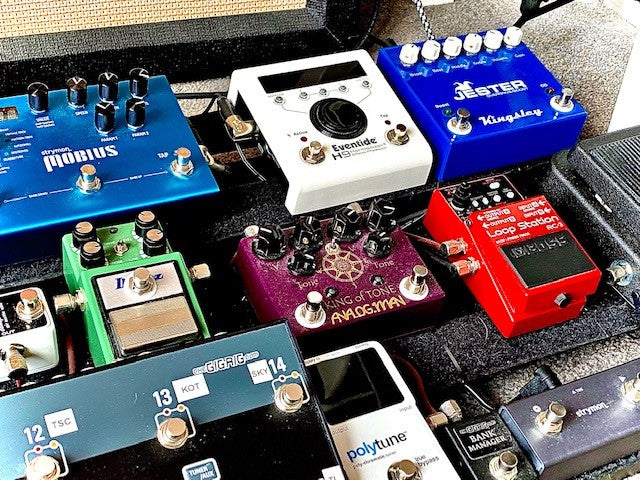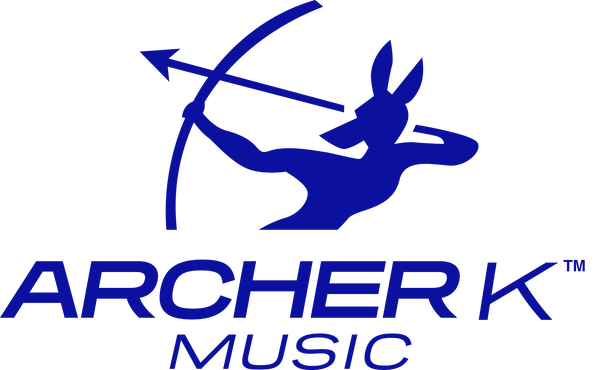
How should you order your effects pedals?
Share
So you've lashed out and bought a number of effects pedals. How do you connect them up and what's the best order for them? We'll dive into this topic in this article.
While there are countless ways you can set-up your signal chain, there is a standard practice to how effects blocks should be connected to get the best sound and tone possible from your guitar rig.
Let’s begin at the start of the signal chain – wah and fuzz. It is common practice to have your guitar connect directly into the wah pedal then connecting the fuzz directly after it. This configuration will provide the best effect. Placing the wah after the fuzz essentially filters out most of the fuzz effect and you only get what sounds like a clean wah sound. Placing the wah first will preserve the fuzz effect leaving the wah less pronounced.
Other than a wah, fuzz pedals are commonly placed at the front of your signal chain, especially if your fuzz has germanium transistors. The reason is that germanium transistors don’t like seeing a low impedance or a signal from a buffer (as is the case with most pedals) at their input. However, as discussed with boost and drive pedals below, you can place a boost before a fuzz pedal. The boost will drive and compress the fuzz pedal while placing the fuzz first followed by boost will provide a nice volume boost to the fuzz without changing its sound too much.
Chorus and other modulation effects. The most common set-up is to have chorus and modulation effects before overdrives, which we cover next. However, if you want the chorus/modulation effects to be more pronounced, place them after overdrives.
Next in the chain are compressors, boosts, low gain overdrives and hard overdrives. Placing the boost before the overdrive will drive and compress the sound more – essentially operating as a stacked overdrive configuration. By placing the boost after the overdrive, the overdrive sound is maintained delivering a volume lift. Many guitarists love the sound of boost pedals that they keep them on all the time. With compressors, the standard set-up is to have them connected before the overdrive. In this set-up, the compressor acts as a boost and drives the overdrive pedal harder compressing it more and providing a more distorted sound. Compressors can also be connected after the overdrive which maintains the gain of the overdrive pedal providing a more level, controlled sound without changing the tone of the overdrive too much. This is a good set-up for solo boost.
Once the wah, fuzz, boost, compressor and overdrives are in place, the next effects in the signal chain are delays, tremolo and reverbs. The standard set-up is to place delay effects before reverb and it is standard practice that the reverb is the last effect in the signal chain before being feed into the amplifier. Tremolo works nicely when connected after the delay and placing it between the delay and reverb produces a very nice sound. It’s common in amplifiers with built in tremolo and reverb effects to have the tremolo before the reverb. However, placing the tremolo right at the end of the signal chain after the reverb works nicely too.
So in summary… here’s a recommended signal chain to get you started:

Remember, play around and experiment – there is no right or wrong.
Big thank you to Dan and Mick from ‘That Pedal Show’. Visit their YouTube channel and watch the video on Pedal Order Basics: What Goes Where & Why?’.
